Sudden Branch Drop Close to Home
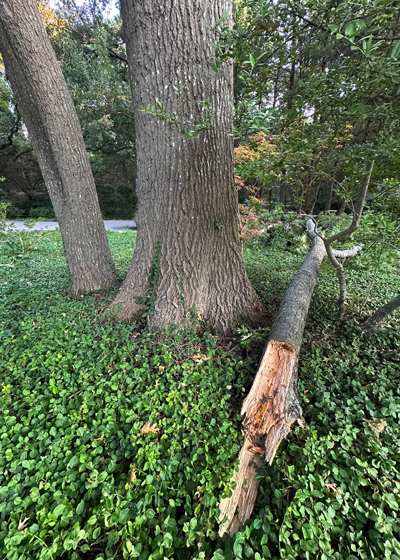
My goal in writing this short story is not to scare you. Oaks are still among our very best landscaping trees. This phenomenon known as “Sudden Branch Drop” isn’t limited to them. Other trees are also candidates.
I wasn’t especially familiar with any of this, so I called my friend Steve Houser, founder and owner of Arborilogical Services, one of the first people to be named “Arborist of the Year” for the state of Texas. Who better to explain it to me.
But even Steve admits it’s a strange thing that happens to trees that appear totally healthy one day, only to have a large branch come down the next.
Here are some things Steve told me about “Sudden Branch Drop” or “Sudden Limb Drop.” He said if I Googled those terms online, I’d find a wide diversity of comments, but that these would be the most common.
• Many species are candidates, notably oaks, elms, sycamores and two trees that aren’t seen much in Texas, eucalyptus and beech. (I worry about a massive pecan that overhangs my home office. I’m having them do some work on it since pecans have such brittle wood.)
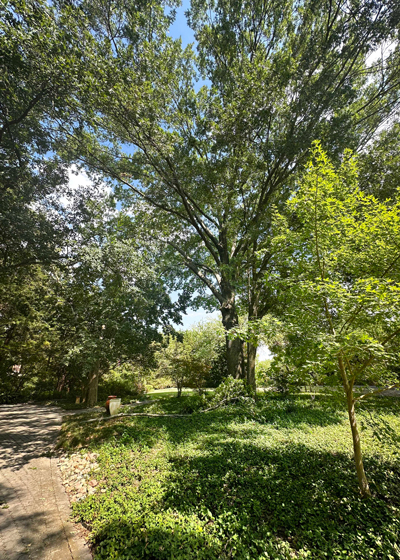
• It typically happens with older trees more than with younger trees.
• Typically occurs during the summer.
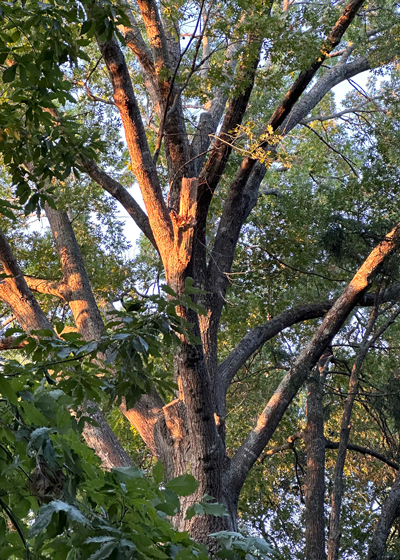
• Is frequently accompanied by a loud “explosive” sound as the limb breaks.
• It’s not necessarily associated with wind or storms. (Ours fell on a perfectly calm night.)
• No exact cause has been pinpointed by professionals, but it’s thought it’s caused by moisture within the tissues of the tree, perhaps as humidity goes up overnight.
• Often comes soon after summer rainstorms that follow extended periods of hot, dry weather. (Uh oh. Sound familiar?)
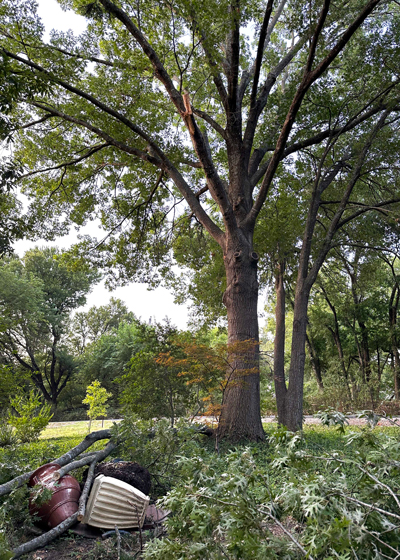
• Typically breaks 2-3 feet away from the trunk due to the weight of the branch, but break may be 10 or 12 feet out from the trunk. The sheer weight of the branch can do a great deal of damage. The large branch that fell in our landscape shattered a 40-inch pot filled with soil. It also knocked two other pots of comparable size onto their sides.
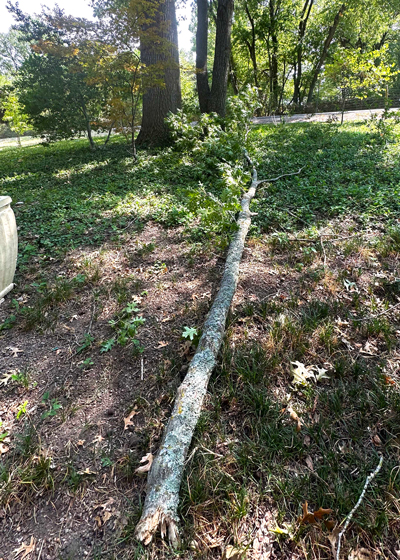
• Once a tree has experienced Sudden Limb Drop it is likely to experience it again. Sure enough, a second smaller branch fell a few days later. It came from a different side of the tree, so it was not broken by the fall of the first limb.
• Your best next step if you have this happen to one of your trees is to have an ISA certified arborist inspect your trees and do any necessary pruning, feeding and other care to keep your trees as healthy and vigorous as possible. Reducing the weight on branches and keeping your tree properly watered are two major steps. I’ve already scheduled a visit by the team from Arborilogical Services to inspect the red oak.
In case you want to read more, here is a comprehensive write-up on the topic from a Master Gardener in California citing reputable sources.
